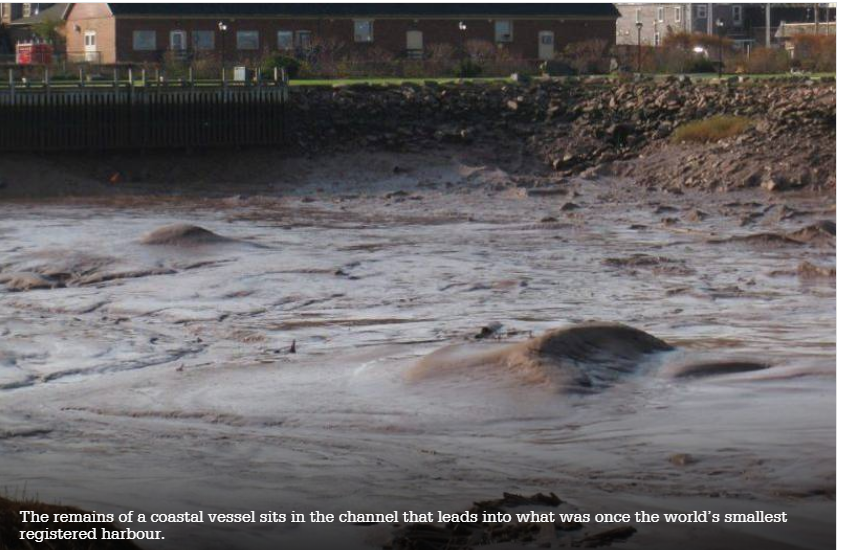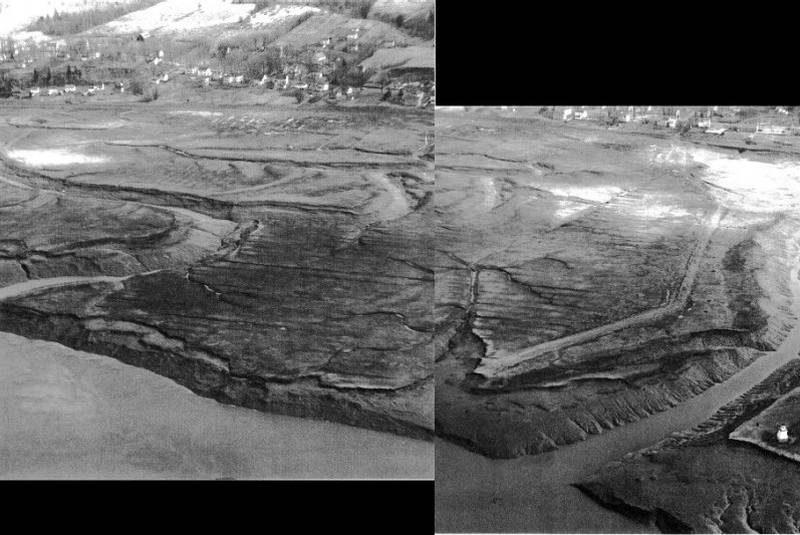Worlds Smallest Harbour EarthCache
-
Difficulty:
-

-
Terrain:
-

Size:  (other)
(other)
Please note Use of geocaching.com services is subject to the terms and conditions
in our disclaimer.
Worlds Smallest Harbour
Wolfville is situated in the North Western portion of Nova Scotia, along the shores of the Minas Basin which is part of the Bay of Fundy. Home to the highest tides in the world, the Bay of Fundy is a 270 km (170 mile) long ocean bay that stretches between the provinces of New Brunswick and Nova Scotia on Canada's east coast. The town is separated from the Minas Basin by agricultural dykes which were built by Acadians in the 17th century. Prior to 1830 Wolfville was known as Mud Creek because of its mud filled harbour.
A harbour is a body of water sheltered by natural or artificial barriers from wind and waves. A natural harbour is a landform where a part of a body of water is protected and deep enough to furnish anchorage. The coast, also known as the coastline or seashore, is the area where land meets the sea or ocean. Tides often determine the range over which sediment is deposited or eroded. Areas with high tidal ranges allow waves to reach farther up the shore, and areas with lower tidal ranges

Geology
Wolfville area is underlain by pre-Mississippian slate and by Mississippian and Triassic sandstones and shale which were all mantled by glacial deposits. The geology varies rapidly from placed to place in the Wolfville area. Landforms were sculpted by erosion, created when a glacier cut away at the landscape. Glacial landforms were created by the features and sediments left behind after a glacier retreats. Over vast periods of time our primitive oceans were formed. Water remained a gas until the Earth cooled below 212 degrees Fahrenheit. At this time about 3.8 billion years ago the water condensed into rain which fell and filled the basins which are now our oceans.

Each day 100 billion tonnes of seawater flows in and out of the Bay of Fundy during one tide cycle -- more than the combined flow of the world’s freshwater rivers. And the water level at high tide can be as much as 16 metres (52 feet) higher than at low tide. The interval between high and low tides is about six hours, so two visits to the harbour will be necessary to observe the high and low tide. Because of the change in the position of the moon relative to the earth, the cycle of high and low tides is about 50 minutes later each day. In the Bay of Fundy - Minas Basin region the maximum tidal range is about 15 m (50 feet) and the height of the tides is increasing at the rate of 0.3 m (1foot) per century. The muddy bottom of Wolfville Harbour is 5.7 m ( 19 feet) below the deck of the Wolfville wharf so that only the higher part of the tidal range can be observed here.

The Mudflats
When the power and energy of the high tide is spent, the waters of the Bay begin to recede and slowly ebb. And by low tide, more than 1,000 square kilometres (620 square miles) of ocean floor lies unprotected and exposed to the atmosphere At the head of the Bay of Fundy lies the most significant intertidal zone – the great mudflats of the Minas Basin – a vast and expanse of slime and sludge.
1959 aerial image shows dykeland and harbour prior to significant erosion.

To log this Earthcache visit the viewing location. Please answer the following questions and send in a timely manner to my geocaching profile or email. Answers not received will result in deleted logs.
1. What has caused the erosion?
2. How long is the Wharf?
3. How wide is the channel to the Wharf?
4. Where does all the red mud come from?
5. [REQUIRED] In accordance with the updated guidelines from Geocaching Headquarters published in June 2019, photos are now an acceptable logging requirement and WILL BE REQUIRED TO LOG THIS CACHE. Please provide a photo of yourself or a personal item at the outcrop to prove you visited the site.
Additional Hints
(No hints available.)